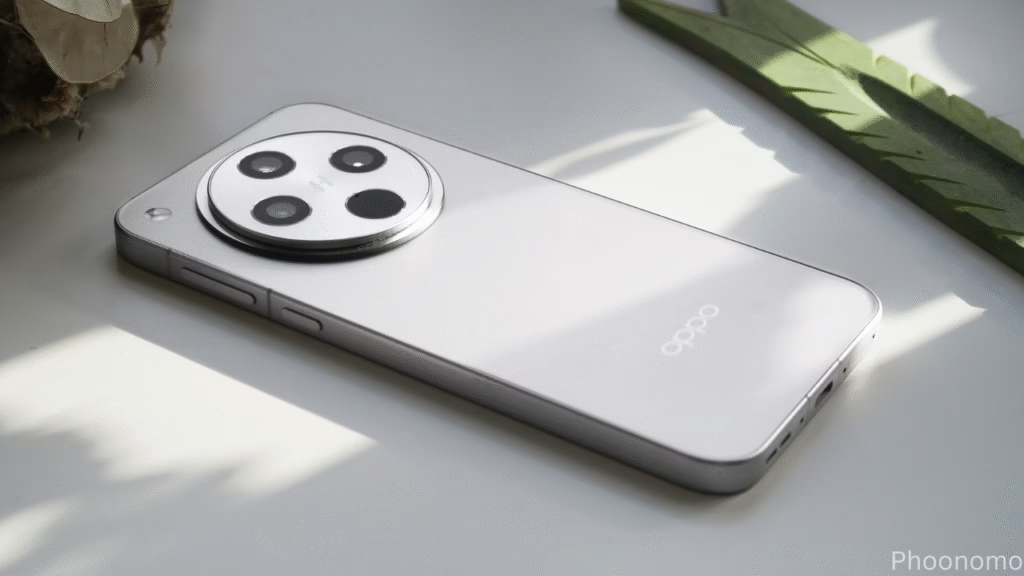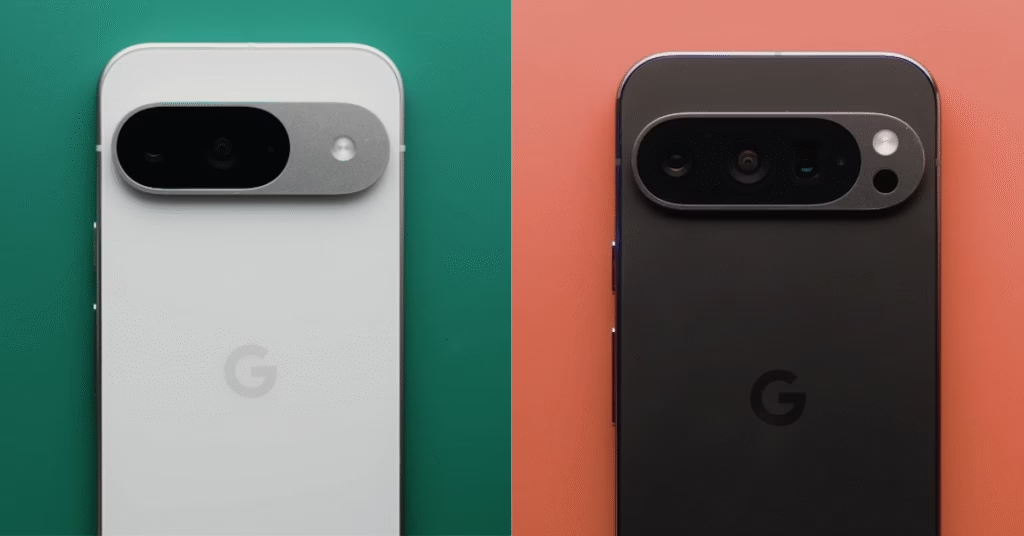
Google’s Pixel 9 lineup has taken an interesting turn this year. For the first time, the company has released two smaller devices with identical size and shape, but very different capabilities under the hood. That has made the choice between the Pixel 9 and Pixel 9 Pro more challenging than before. Both handsets share the same 6.3-inch display size, nearly identical weight, and the same Google Tensor G4 chip, but there are some important differences that may influence your decision. Let’s break down the details and see how they compare in real-world use.
Design and Build
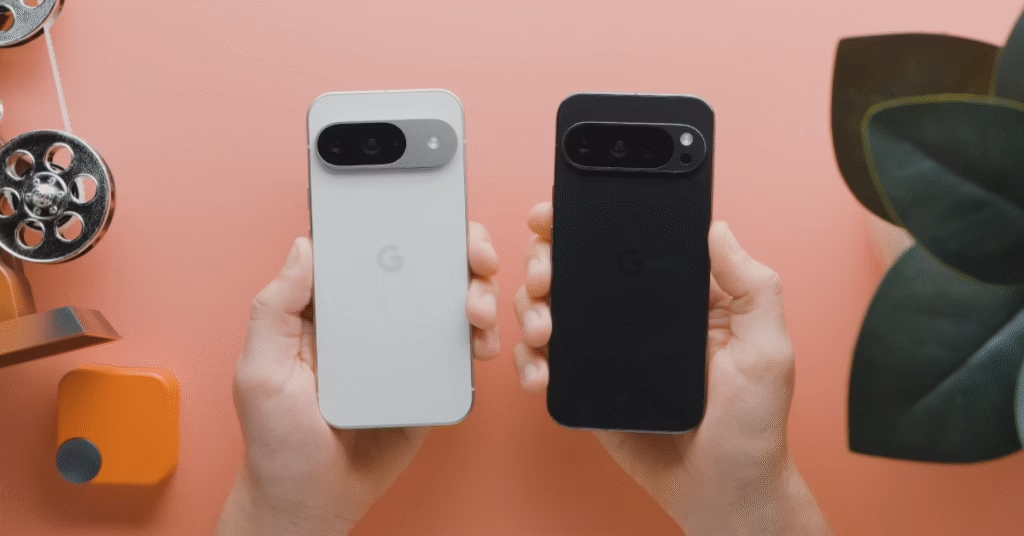
At first glance, it’s almost impossible to tell the Pixel 9 apart from the Pixel 9 Pro. Both phones share the exact same footprint, same height and width, and are separated by just one gram of weight. Google has refined the design with slimmer, more uniform bezels that look modern and balanced. Both devices use Gorilla Glass Victus 2 on the front, an aluminum frame, and carry an IP68 rating for dust and water resistance.
The difference lies in finishes. The standard Pixel 9 gets brighter, more playful color options, while the Pro models lean toward muted tones with a matte glass back. That matte finish paired with glossy rails may appeal to some, but others might prefer the bold hues of the regular edition. Either way, Google has ensured that cases are interchangeable, which is a thoughtful touch.
Quick Comparison (Google Pixel 9 vs 9 Pro)
| Specification | Pixel 9 | Pixel 9 Pro |
|---|---|---|
| Display | 6.3″ OLED, FHD+, 120Hz | 6.3″ LTPO OLED, QHD+, 1–120Hz |
| Chipset | Google Tensor G4 (3nm) | Google Tensor G4 (3nm) |
| RAM | 12GB | 16GB |
| Storage | 128GB / 256GB | 128GB / 256GB / 512GB / 1TB |
| Rear Cameras | 50MP main + 48MP ultra-wide | 50MP main + 48MP ultra-wide + 48MP telephoto (30x zoom) |
| Front Camera | 10.5MP | 42MP |
| Battery | 4700 mAh, ~27W wired, ~21W wireless | 4700 mAh, up to 45W wired, ~23W wireless |
| OS | Android 14 with Pixel AI, 7 yrs updates | Android 14 with Pixel AI, 7 yrs updates |
| Build | Matte glass back, glossy frame, IP68 | Matte glass back, glossy frame, IP68 |
| Weight | 198g | 199g |
| Price (Launch – Aug 2024) | $799 / £699 | $999 / £899 |
| Price (2025) | $479.95 / €450.18 / £699 | $529.95 / €707.09 / £899 |
Disclaimer: Specs and prices may vary by region. Always confirm with official sources.
Display Quality
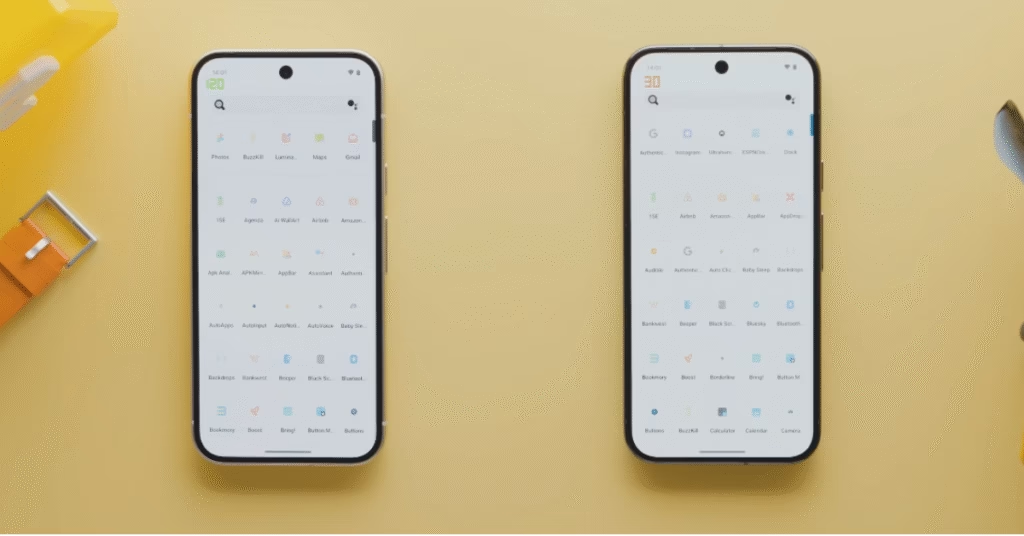
Both handsets feature a 6.3-inch OLED panel, but the Pixel 9 Pro has the edge with a higher resolution and the “Super Actua” LTPO technology. This allows it to scale its refresh rate from 1Hz all the way to 120Hz, which not only makes animations smoother but also conserves battery during static content. The Pixel 9 uses a more conventional 60–120Hz adaptive display.
In daily use, the difference isn’t dramatic, but the Pro’s screen can get noticeably brighter outdoors and delivers slightly better sharpness. For media lovers and gamers, that upgrade could make the experience feel more premium.
Performance and Hardware
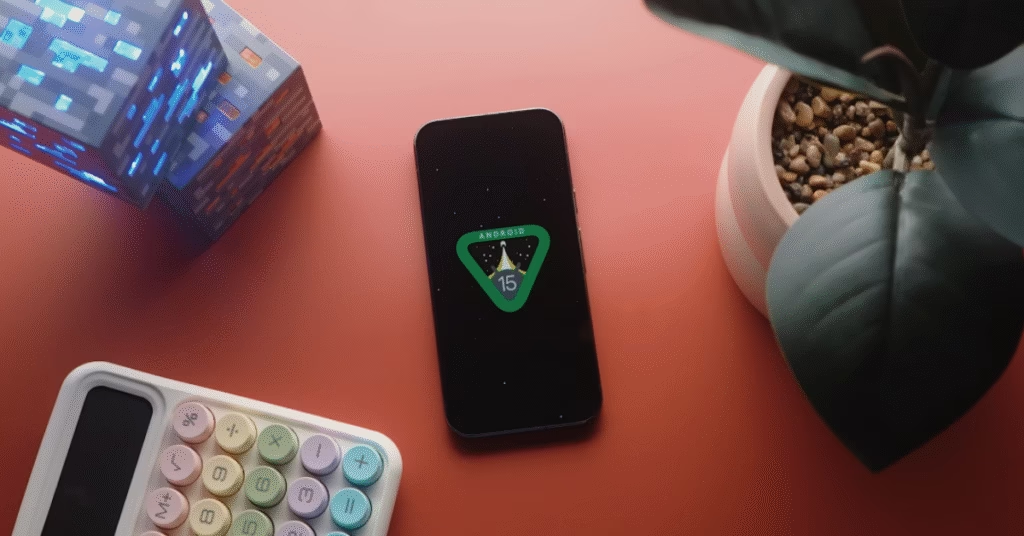
Both devices are powered by the Google Tensor G4 chip with the Titan M2 security co-processor. Day-to-day performance feels snappy on both, with the same software optimizations across the board. The Pro, however, comes with 16GB of RAM compared to 12GB on the base model.
That extra memory doesn’t change much for casual use, but it can help with heavy multitasking, AI workloads, and future-proofing. As Google continues to push its on-device AI features, the Pro is more likely to handle them with ease in the long run.
Storage options are also broader on the Pro, with capacities going up to 1TB, while the standard model maxes out at 256GB. If you capture lots of video or use your phone as your main creative device, that added storage could be essential.
Cameras: The Key Difference
The most obvious reason to spend more on the Pro is the camera system.
The Pixel 9 comes with two rear cameras: a 50MP main shooter and a 48MP ultrawide lens. The results are excellent, as you’d expect from Google, with strong colors, detail, and computational photography magic. But the Pro adds a third lens, a 48MP telephoto with 5× optical zoom. This dramatically improves flexibility, especially for portrait shots and distant subjects.
The Pro also supports 8K video recording, Pro mode photography controls, Super Res Zoom video up to 20×, and advanced video boost features. These are missing on the standard model.
On the front, the difference is even more striking. The Pixel 9 uses a 10.5MP selfie camera, while the Pro jumps to a 42MP sensor. If you’re big on selfies or video calls, that upgrade is obvious.
Simply put, if the camera is your main concern, the Pro is the one to get. The base model still takes excellent photos, but it lacks the versatility of telephoto zoom and higher-end video tools.
Battery and Charging
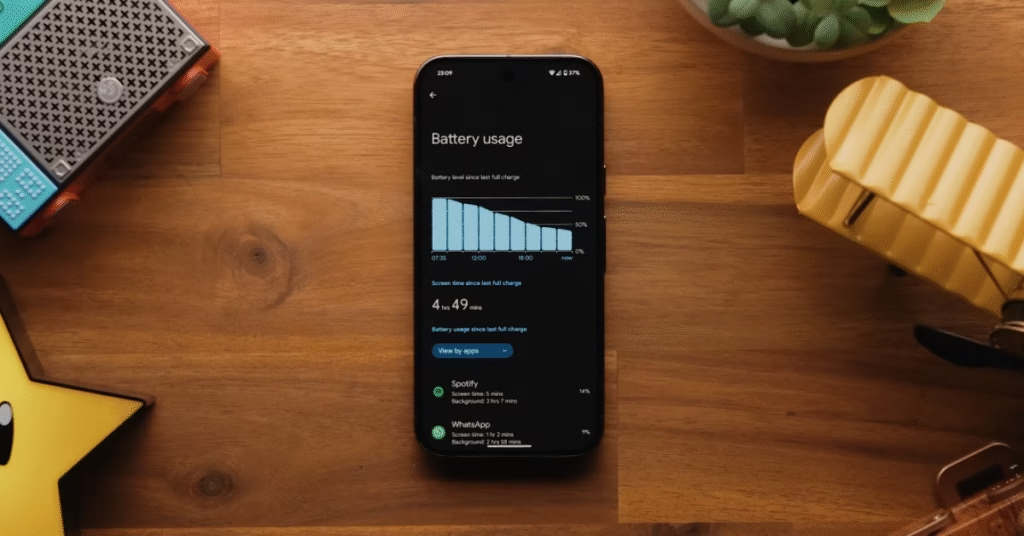
Both models share the same 4,700mAh battery, which is respectable for a phone this size. In real-world use, battery life is more than adequate for a full day with moderate to heavy usage.
Charging speeds are another area where the Pro holds a small advantage. While both support wired fast charging and wireless charging, the Pixel 9 Pro can reach around 70% in 30 minutes, while the Pixel 9 manages closer to 55% under the same conditions. Wireless charging also maxes out slightly higher on the Pro when paired with Google’s Pixel Stand.
It’s worth noting that while Google advertises 45W charging, real-world speeds often top out lower, closer to 27W, depending on the charger used.
Software and AI Features
Both phones launch with Android 14 out of the box, not Android 15 as some users hoped. Still, Google promises seven years of software and security updates, meaning these devices will be supported until 2031.
On the AI side, the experience is nearly identical across the two. Features like Pixel Studio, which lets you create or reimagine images with text prompts, and Pixel Screenshots, which automatically analyzes captures for context and helpful info, are available on both. The Pro’s extra RAM may give it an edge with more demanding AI features, but the core functionality remains the same.
One feature that stands out is Satellite SOS, though it’s currently limited to the U.S. This allows users to send emergency messages when they’re off-grid without a cellular connection. It’s not yet available globally, but it shows Google’s focus on safety.
Pricing and Value
Pricing has been a major talking point around the Pixel 9 series. At launch in August 2024, the Pixel 9 started at $799 / £699, while the Pixel 9 Pro came in at $999 / £899 each model priced about $100 higher than their predecessors. That put the Pro roughly $200 above the standard Pixel 9, a gap that raised eyebrows among buyers.
Fast-forward to 2025, and the story looks different. The Pixel 9 now sells for around $479.95 / €450.18 / £699, while the Pixel 9 Pro is down to about $529.95 / €707.09 / £899. These discounts significantly improve their overall value.
The Pro still justifies its premium for certain users, offering an extra telephoto lens, brighter LTPO display, expanded storage choices, and a sharper selfie camera. But for anyone who just wants a clean Android experience, strong all-around cameras, and years of software support, the standard Pixel 9 is now an even more compelling option especially at today’s lower price point.
Conclusion
The decision between these two phones ultimately comes down to priorities. If you want the very best Google has to offer in a smaller form factor, the Pixel 9 Pro is a no-brainer. It delivers a more versatile camera setup, extra performance headroom, and a sharper display.
On the other hand, the Pixel 9 is far from a compromise. It shares the same design, core performance, software, and AI features at a lower price point. For many buyers, it represents the smarter choice especially if telephoto zoom or 8K video aren’t must-haves.
For the first time, Google has managed to create two nearly identical phones where the differences aren’t about size but capability. That makes the decision more nuanced, but also refreshing. Whether you go with the base model or the Pro, you’re getting one of the best Android phones of 2025.
See Also Pixel 6 vs Pixel 9: Is It Worth the Upgrade?
FAQs (Google Pixel 9 vs 9 Pro)
What is the difference between the Google Pixel 9 and Pixel 9 Pro?
The Pixel 9 and 9 Pro share the same size, processor, and battery, but the Pro model adds a telephoto zoom lens, a higher-resolution selfie camera, a brighter LTPO display with 1Hz refresh rate, more RAM, and additional storage options.
How much do the Pixel 9 and Pixel 9 Pro cost?
At launch in August 2024, the Pixel 9 started at $799 / £699, while the Pixel 9 Pro began at $999 / £899. In 2025, prices dropped to around $479.95 / €450.18 / £699 for the Pixel 9 and $529.95 / €707.09 / £899 for the Pixel 9 Pro.
Which Pixel 9 model has better cameras?
The Pixel 9 Pro has the advantage with an additional telephoto lens supporting up to 30x zoom, a 42MP selfie camera, and pro-level photo/video modes. The regular Pixel 9 still delivers great shots with its dual-lens system but lacks the zoom versatility.
Do both Pixel 9 models support the same software features?
Yes, both run on Google’s clean Android experience with 7 years of updates. Features like Pixel Studio, AI editing, and Pixel Screenshots are available on both, though the Pro unlocks extra camera tools.
Is the price difference worth it between the Pixel 9 and 9 Pro?
It depends on your needs. If you want the best camera experience and more advanced display features, the Pro is worth it. If you just need a reliable, compact phone with strong performance and software support, the regular Pixel 9 is the better value especially at current discounted prices.
